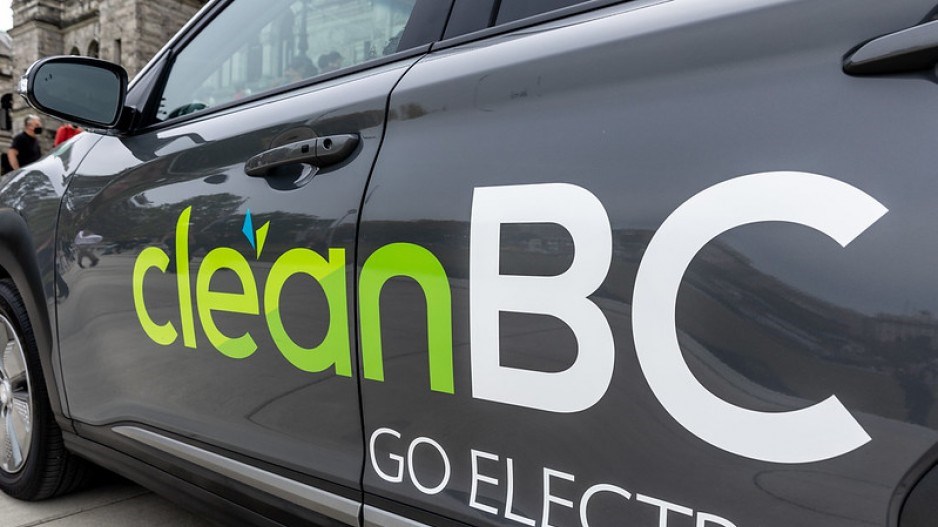Over the past 15 years of writing in this space, we have avoided covering the same topic in consecutive columns.
Rightly or wrongly, we have tried to keep readers interested by providing commentary on a shifting array of economic and public policy issues. But this week we are making an exception, because of the unusually large implications for jobs and prosperity of the NDP government’s CleanBC Roadmap to 2030.
In last month’s column, we summarized the expected economic impacts of the latest iteration of CleanBC, as reported in economic modelling commissioned – but not discussed publicly – by the government. The comprehensive modelling work is the best information available on what’s expected to happen to the sa国际传媒 economy as the carbon tax rises rapidly to $170 per tonne by 2030, “hard” emissions caps are imposed on heavy industry and the fossil fuel sector, heating options are restricted to electricity for businesses and households, and a plethora of other “stretch regulations and standards” are implemented – which all result in higher costs. The projected outcome is jaw-dropping: The province’s economy is a staggering $28 billion smaller in 2030 than it would be absent the suite of climate policies in the CleanBC Roadmap.
Our previous column emphasized that a smaller economy combined with a growing population will be unambiguously negative for the province’s prosperity. Using reasonable population projections consistent with historic patterns and the government’s economic modelling results, we calculated that by 2030 real per capita income (GDP) falls back to levels circa 2013. This is a setback that is difficult to contemplate; it is also unlike anything we have observed in decades of tracking public policy in sa国际传媒 – a government advancing a policy agenda that will shrink the economy and make average citizens worse off. Any erosion of per capita GDP is worrisome because it means less private sector investment, declining household incomes and fewer job opportunities – with disproportionate impacts on younger age cohorts and in resource-based regional economies.
The modelling results also show that the anticipated fallout is economy wide. Of the 24 sectors reported in the modelling, income (GDP) is lower in all but the electricity generation and distribution sector in 2030 under the CleanBC scenario. Resource-related sectors are hardest hit. Heavy industry (which includes mining, metals, pulp and paper) is projected to be almost 20 per cent smaller in 2030, thanks to CleanBC. Light industry (which includes light manufacturing, construction and forestry) is estimated to be 14 percent smaller compared to the reference scenario.
The CleanBC plan is about to become a strong headwind to economic growth over the rest of the decade. The economy-wide growth slowdown that the modelling captures is key to the government being able to deliver on its aggressive short-term greenhouse gas (GHG) emissions targets.
Proceeding with the CleanBC Roadmap as currently envisioned will bring annual real GDP growth to a crawl and push the economy into a long period of recession-like conditions. The growth downshift means British Columbians will be confronted with declining real incomes while government struggles to deliver better services and address an increasingly complex array of real-world challenges as available revenues dwindle in per capita terms. To us, the government’s CleanBC Roadmap to 2030 sits awkwardly with its other priority commitments to improve affordability and boost job opportunities, incomes and overall well-being for households.
In our judgement, the main reason the CleanBC Roadmap is so damaging to economic growth is because of the short timeline set for achieving the 2030 GHG emission reduction target of 40 per cent below the 2007 level. The truth is that sa国际传媒’s emissions have hardly budged since 2007, even with North America’s highest carbon tax on the books.
We believe the near-term emission targets and the associated policy agenda should be recalibrated, while retaining the more important net-zero 2050 goal. More realistic timelines will allow for new technologies to develop and be widely adopted. They will also enable sa国际传媒 businesses to invest on timelines that align better with planned upgrades of depreciated capital assets, available technologies and market conditions.
Other elements of the CleanBC plan, such as the level and timing of hard emission caps imposed on various industries, should also be re-tooled, with a greater emphasis on minimizing economic fallout in the near-term while still retaining the 2050 targets. Impacts on jobs, incomes, household budgets, First Nations economic development and the health of regional economies should be paramount considerations as the government works to find a new and more reasonable path on the longer road to 2050.
Jock Finlayson is the Business Council of British Columbia’s senior adviser; Ken Peacock is the council’s senior vice-president and chief economist.


